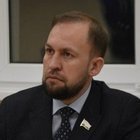Realnoe Vremya’s analytics: rating of Russian regions in foreign trade
The sanctions and the new political reality are transforming the country’s foreign economy and forcing it to look for new markets. Today the top 3 in foreign trade is represented by Moscow, Saint Petersburg and Moscow Oblast. As Realnoe Vremya’s analytic service found out, only Tatarstan is in the top from the Volga Federal District, it is fifth after oil-rich Khanty-Mansiysk.
Last year the foreign trade turnover of Russian regions grew, which was conditioned by a low base of the coronavirus-struck 2020. However, 2022 will change the balance of power. Sanctions, restrictions imposed on the supply of products to Russia and the legalisation of parallel import will influence the regions’ export and import volumes.
How the rating were made
The rating was based on the data of the Federal Customs Service (Russia’s FCS) for 2021. More than six months in Russia’s foreign trade statistics is not made public. As the press service explained to Realnoe Vremya, this is done “to avoid wrong assessments.” According to the website of the Russian FCS, the data on foreign trade was last updated on 22 March 2022. Only January figures are in public domain, which aren’t accurate to make the rating.
The Russian Federation’s foreign trade leaders
| russian region | export, bn USD | import, bn USD | foreign trade turnover, bn USD | |
| 1 | Moscow | 205,6 | 128,9 | 334,5 |
| 2 | Saint Petersburg | 29,9 | 26,6 | 56,5 |
| 3 | Moscow Oblast | 11,4 | 33,6 | 45 |
| 4 | Khanty-Mansi Autonomous District | 17,5 | 0,5 | 18 |
| 5 | Tatarstan | 12,1 | 5,5 | 17,6 |
| 6 | Sverdlovsk Oblast | 9,3 | 8 | 17,3 |
| 7 | Kemerovo Oblast — Kuzbass | 15,3 | 0,8 | 16,1 |
| 8 | Rostov Oblast | 11,6 | 2,9 | 14,5 |
| 9 | Krasnodar Krai | 7,6 | 5,6 | 13,2 |
| 10 | Leningrad Oblast | 8,4 | 4,4 | 12,8 |
| 11 | Sakhalin Oblast | 11,4 | 0,4 | 11,8 |
| 12 | Kaliningrad Oblast | 2,4 | 8,8 | 11,2 |
| 13 | Chelyabinsk Oblast | 7,3 | 3,5 | 10,8 |
| 14 | Primorsky Krai | 3,4 | 7,2 | 10,6 |
| 15 | Irkutsk Oblast | 8,4 | 2,1 | 10,5 |
Credit: Russia’s FCS
Exports rose almost in all the regions of the Russian Federation from the top 10, Sakhalin Oblast is the exception that expanded its exports just by 0,8%. Tatarstan whose exports fell almost by 43% in 2020 managed to regain the lost position and went up to the 5th place. It should be reminded that in 2020 the republic was 9th.
Russia’s leading regions in exports in 2021
| region | export, bn USD | Change, % (bn usd) | |
| 1 | Moscow | 205,6 | +56% (131,3 in 2020) |
| 2 | Saint Petersburg | 29,9 | +42% (21 in 2020) |
| 3 | Khanty-Mansi Autonomous District | 17,5 | +13% (15,45 in 2020) |
| 4 | Kemerovo Oblast | 15,3 | +35 % (11,3 in 2020) |
| 5 | Tatarstan | 12,1 | + 55% (7,8 in 2020) |
| 6 | Rostov Oblast | 11,6 | + 36% (8,5 in 2020) |
| 7 | Moscow Oblast | 11,4 | +75% (6,55 in 2020) |
| 8 | Sakhalin Oblast | 11,4 | +0,8% (11,3 in 2020) |
| 9 | Sverdlovsk Oblast | 9,3 | + 34% (6,9 in 2020) |
| 10 | Leningrad Oblast | 8,4 | +55% (5,4 in 2020) |
Credit: Russia’s FCS
Sverdlovsk Oblast, Tatarstan and Kaluga Oblast showed the biggest import growth in 2021 among the regions from the top 10 importers. The table shows a change in the regions’ import compared to 2020.
Russia’s leading regions in imports in 2021
| region | import, bn usd | change, % (bn usd) | |
| 1 | Moscow | 128,9 | +25% (102,76 in 2020) |
| 2 | Moscow Oblast | 33,6 | +33% (25,25 in 2020) |
| 3 | Saint Petersburg | 26,6 | +23,7% (21,5 in 2020) |
| 4 | Kaliningrad Oblast | 8,8 | +30% (6,76 in 2020) |
| 5 | Sverdlovsk Oblast | 8 | +62% (4,93 in 2020) |
| 6 | Kaluga Oblast | 7,5 | +47% (5,95 in 2020) |
| 7 | Primorsky Krai | 7,2 | +41% (5,08 in 2020) |
| 8 | Krasnodar Krai | 5,6 | +25% (4,48 in 2020) |
| 9 | Tatarstan | 5,5 | +52% (3,61 in 2020) |
| 10 | Leningrad Oblast | 4,4 | +23% (3,55 in 2020) |
Credit: Russia’s FCS
Outlook
Due to the start of the special military operation in Ukraine and the imposed sanctions, Russia lost a significant part of its trade partners.
According to the FCS, in Russia’s foreign trade in January 2022, the European Union accounted for 38,9% of Russian commodity turnover (34,6% in January 2021), APEC states did 33,6% (35,5%), CIS countries — 9,7% (12,2%), EAEU countries held 6,5% (9,2%).
The country has the task of refocusing and strengthening positions in new markets.
-
-

Alexey Starchenko Project manager at Statimex.ru
-
Russia’s FCS stopped publishing the foreign trade statistics mainly because of the aggravation of the political confrontation with Western countries.
Firstly, even though Europe is looking for alternative sources of oil and gas, it cannot do without Russian feedstock in the foreseeable future. Gas and oil prices for different countries significantly differ. The FCS doesn’t want to reveal the details what countries got Russian oil and gas, its amount and price.
Secondly, there is also sense in hiding what countries Russia is getting closer economically amid the sanctions and in what commodity groups from political opponents because the USA can press many countries.
Thirdly, with due processing, the information about what commodity imports have decreased and how much can detect vulnerabilities of the Russian economy.
I think that the statistics for 2022 will start to be published in the same volume and specification after key tasks of the special military operations are achieved and the Russian economy is adapted enough. By my estimate, this won’t happen earlier than in 6-12 months.
There is a chance not very detailed statistics will be published earlier, moreover, a significant part of supplies in the Trade Import and Export Classification will be classified. This was used in the past too: the commodity trade pattern between Russia, Iran and Syria has been classified since 2019. The total trade volume with these countries can be learned, but there is a pass code to know what commodities they are.
As for Tatarstan, 68% of the region’s exports in 2021 were represented by minerals (crude and refined oil). Rubber and rubber goods (10%) and polymers (5%) held a notable share too. If Tatarstan supplies oil mainly to Poland and the Netherlands, rubber is shipped to India, Poland, Turkey, China, and polymers are supplied to Belarus and Kazakhstan. There can be some growth in trade with India, China, Turkey and Belarus.
Germany, China and the USA provided about half of Tatarstan’s imports in 2021. The shares of Turkey and Italy were noticeable. Industrial equipment and vehicles are key products. This year the orientation to China and perhaps Turkey will intensify, the shares of Germany and USA will likely go down.
Statimex.ru forecasts that in 2021 Tatarstan will be able to keep exports, some rise is not ruled out because of oil price growth in mid-2022.
In 2021, Tatarstan exported goods for about a billion dollars a month, this is why the outlook for 2022 can be $12 billion. Poland and the Netherlands — main Tatarstan oil recipients — will unlikely be able to find another supplier during the year.
The situation with imports is a bit more complicated. Import market players of Russia estimate that imports for different products have fallen from 1,5 to 5 times since March.
The average imports of Tatarstan in 2021 were about $450 million. Germany is the leader in the biggest import groups (industrial equipment and transport) covering at least a third of supplies, other European countries and the USA are also among key suppliers. Therefore we can assume that imports decreased 2-3 times in March and later: about to $225-150 million. I would say Tatarstan will have some $2,5 billion in annual imports in 2021.
-
-
-

Ildar Ablayev Kazan Federal University professor, doctor of economic sciences, rector of Tatar Innovative Economy Management Academy
-
The decision to hide the statistics on the customs’ website is correct because the state permitted dealing with parallel import. The translation is that “we can counterfeit.” In other words, we can bring goods without right holders’ permit — Siemens, Schneider Electric, BMW, Volkswagen and others — through third countries — Uzbekistan, Kyrgyzstan, Kazakhstan, Armenia or Iran. These are the windows that become windows of life for us. Foreign trade flows and logistics are seriously changing — Western routes are closed, while Eastern routes need to be taken now.
The customs doesn’t want to show these flows so that our enterprises aren’t imposed sanctions. The end of the year and next year will show how we will manage to set up such parallel import. Now it is yet hard to talk about results.
We are entering a grey zone. This applies to sales too. For instance, an oil tanker leaves the port of Novorossiysk, but its destination isn’t given in the documents — the tanker went nowhere and another tanker approaches it somewhere in the ocean or in the sea and pumps out oil. By the way, Iran still sells its oil this way. Moreover, Russian oil is sold at a good discount — 25-30%.
It is profitable for Russian to sell this way — it is better than nothing because freezing an oil well means losing it. Now oil will have to be refocused on India and China, and there is Pakistan now, Turkey buys it, Arabs buy it. In general the situation in Russia is very good this year: oil and gas incomes haven’t fallen, in contrast, they have risen, gas prices skyrocketed, almost five times.
Today the world economy is clearly divided into the East — Russia, India, China, plus Southeast Asia, Near East, Arab states, Turkey, Africa and Latin America — and the West — the USA, European countries, Canada, Australia with New Zealand, the RAS. But the gates, windows and doors to the West are closed for us now. Moreover, we seriously depended on the West in equipment, in energy it is Siemens or General Electric, Schneider Electric, that provide all our CHPPS, hydro plants.
The West is open for us now, and nobody is going to close the borders. The SCO summit recently held in Samarkand showed that China and India, Southeast Asia, Near East, Turkey, Africa, Latin America are those countries we will be continue working with, including with Western products. But it will be more expensive, by some 25-30% given the new logistic routes.
By the way, Turkey has very interesting groundwork in mechanical engineering, while China has everything, the word “no” doesn’t exist there. So we shouldn’t feel sad because the West severely imposed sanctions on us. The harm is greater for them — their metallurgical, I think 45% petrochemical enterprises and plants making mineral fertilisers will close, they will collapse this year. Housing utilities are also in critical conditions because they will lack 50 billion cubic metres of gas. At the same time, Nord Stream 2 is ready, only the button needs to be pressed, and these 50 billion will flow. A very interesting situation is unfold in the world now.
-
-
-

Alexander Razuvayev Economist, member of the Supervisory Board of the Guild of Financial Analysts of Russia
-
I think as soon as the special military operation is over, reports will start to be published again. Now there is no sense in making import data public, especially if it is some grey import going through Azerbaijan, Uzbekistan, Kazakhstan. Why frame our partners?
Tatarstan, first of all, should work with Turkic countries — Uzbekistan, Kazakhstan, Azerbaijan, Turkey. These links are very important, moreover, we can easily talk about a cultural and business Turkic unity. These Eastern countries always give Tatarstan the green light from all perspectives.
-
-
-

Rustem Shayakhmetov Economist, candidate for economic sciences, docent of the Department of Economics and Management of Ufa State Petroleum Technological University, director of R-Invest
-
The openness, first of all, is needed for the country’s investment attractiveness. I think while military actions are taking place, the system will remain closed. The closure of the FCS’s data doesn’t allow supervisory agencies of European countries, the USA to track our export flows and consequently the rest more accurately. It is also necessary to consider that foreign trade financial results irritate our opponents very much, and our results are now really astronomic. First of all, it applies to gas, oil, metals, food.
The problem is that there is little import. For instance, Russian mechanical engineering has stalled because there aren’t components. This industrial segment depended mainly on supplies from Europe, the USA, Japan, South Korea. Now it needs to refocus on China, India.
The search for new markets won’t take more than one year, perhaps, a year and a half, I mean final supplies. If the West seriously dominated in some products for 30-40 years, now this domination is over. In some segments it can take five or even 10 years, it is planes.
In this respect, parallel import will provide a positive effect. But one should take into account that some products, for instance, smartphones that have chips can stop operating here. The same is about the cars that can be managed from the satellite. Grey import is making our lives simpler now, but we will see in future.
-
-
-

Marsel Salikhov Candidate for economic sciences, researcher of Faculty of World Economics and Politics of HSE NRU
-
Many things aren’t being published now. And the customs statistics aren’t an exception but a general tendency. For instance, the data on oil and gas the Central Dispatcher Office used to published isn’t published, the Finance Ministry isn’t publishing the data on the pattern of budget expenditure. The official stance is “to avoid inaccurate evaluations,” but the main reason is not to reveal detailed information about how the sanctions are influencing the economy.
At the same time, information hiding creates problems for businesses, many companies that don’t really understand what is happening. At the same time, the FCS counts this data but doesn’t make it public. And while the sanctions are on, this tendency won’t change and the FCS’s reports aren’t going to be published.
The logistics in general will now refocus on Asia, not Europe. Here, for instance, Leningrad Oblast that was focused on European countries more can suffer more. In this respect, Tatarstan is less dependent, moreover, considering that the region is Islamic, the focus is shifting to the Near East, Iran, Saudi Arabia.
I think the process of entering new markets is complex, long. These are completely different markets with their specifics and with much smaller economies compared to the European Union.
-
-
-

Yevgeny Nadorshin Ex-adviser to the Russian finance minister, chief economist of Capital consultancy
-
Sooner or later, I think, the principle of openness of data will come back. Nothing is eternal, as classics put it, and both the approaches and principles will change, I think, including to the official statistics, and we will see all numbers again. I suppose they are all collected, the publication just stopped.
The situation in foreign markets is changing now, at times quite dynamically, also, it is quite unambiguous. The principle used now is “Work with those you have managed to agree with.” The regional authorities and businesses perfectly understand what commodities they have, and it is necessary to try to search and agree.
There is certain amount of supplies from Russia, this is seen in the official statistics of those countries where customs services publish such statistics. As for parallel imports, it seems to be much weaker. It is seen that some supplies are made. For instance, from the same Kazakhstan Russia has some strange relations now, imports made. But the volumes are not comparable to those made directly from Europe in the past. But $20 billion in the current conditions is not a bad assessment, which means that the situation is developing better than Manturov himself talked about just 1,5 months ago when he was appointed as vice premier.
-
-
-

Albert Bikbov Economist and blogger
-
The customs statistics have been hidden since February because of the special military operation in Ukraine and the following unprecedented storm of sanctions. The statistic date in public domain could be used to correct the sanctions pressure on our country and its trade partners. For instance, the data on the destination and amounts of oil could be used to press the partner buying Russian oil to force him to refuse the purchases.
The access to the statistic data will open only when the sanctions become a thing of the past. Unfortunately, Western countries aren’t yet even planning to weaken the pressure on our country but just go on increasing the number of sanctions. In such conditions, the statistics in 2022 will unlikely become public, including in 2023.
The Russian regions are refocusing to any available foreign markets to sell and buy products today. For instance, it is the countries that are friendly to our country or have a neutral position. For instance, it is SOC members, some Asian and African states, Near Eastern countries.
Tatarstan has trump cards in the form of long-term established links with the Islamic world, while Rustam Minnikhanov has been chairing and actively working in the Russia — Islamic World Strategic Vision Group. Agree that it is easier to take a paved road than create a new one.
New partners have been looked for since February. Logistic difficulties, for instance, in trading oil and petrochemicals are another thing. It is hard to quickly build new pipelines, tankers and other infrastructure to turn towards the countries that are friendly and neutral to Russia. Such infrastructure will take several years.
The oil embargo that will come into force on 1 December 2022 is the main factor influencing Tatarstan’ foreign trade volumes. Tatarstan supplies oil to Europe via the Friendship pipeline, consequence, unpleasant things can be expected from December and next year when the embargo on oil products comes to effect.
Consequently, a significant fall isn’t expected in 2022, on the contrary, higher prices for oil and petrochemicals will compensate for the insignificant declines in the total amount of export.
Tatarstan’s total exports in 2022 in monetary terms not only won’t fall but also will even grow. In imports the tendencies will be average Russian — a fall by 40% by the end of the year because of the exit of many foreign companies from Russia and sanctions on trading with us.
Parallel import amid the total departure of Western companies from Russia will only grow. Thanks to it, it became possible to avoid a significant fall in the quantity of imported goods, save the number of foreign components for Russian producers and conserve quality standards for Russian consumers. For instance, the same iPhones aren’t gone.
-
-
-

Almir Mikhaeyev Tatarstan State Council deputy, leader of the Tatarstan office of Fair Russia
-
I think in the foreseeable future detailed statistics on foreign trade won’t appear in public domain. This can be related to both the necessity of hiding new trade partners, including parallel importers, and the necessity of hiding mistakes of the industrial policy. It is obvious that Tatarstan as well as other regions has to refocus on, first of all, China and other Asian countries. China used to account for about 15% of Tatarstan imports ranking second after Germany. Taking into account that primarily equipment was brought from Germany to Tatarstan, now China has every chance of being first in imports.
And since it takes time to set up new trade relations, create logistic chains, import and export figures will plunge a bit.
One can judge how useful or harmful parallel import is only by certain sectors. For instance, in the medical industry, parallel import is unlikely to be suitable — the use of medical products has a lot of specific rules and requirements. So on the territory of Russia foreign companies have official authorised representatives, they are responsible for the correct circulation of the product inside the contract (providing accurate translations of technical and use documentation, labelling, storage terms and circulation). However, parallel import of medical goods hasn’t been officially permitted yet.
But parallel import of feedstock, components or some idle time in the circulation of products seems to be inevitable.
Taking into account that parallel import is made in small lots, there are more intermediaries and hubs on its way to the consumer, a lower price can unlikely be expected.
-
-
-

Shamil Ageyev Chairman of the Tatarstan Chamber for Commerce and Industry
-
I cannot make forecasts about the fall in exports or imports of Tatarstan — nobody will tell you. The only thing I will say is that the restriction of exports has affected 60% of Russian enterprises, moreover, 10% enterprises have stopped exports at all. But we don’t stay still, our delegations work, we have recently been to Iran, India, Kazakhstan, Uzbekistan, we are going our best.
Trade must be beneficial, it is necessary to buy what we don’t make and sell what we made. It is necessary to save all the links between enterprises, sectors. Trade must exist as well as production. And it doesn’t matter, if it is parallel or traditional import. The presence, demand and supply of a product influences prices in the market — there is a good, there is demand.
-
Reference
Russia’s key trade partners, according to the FCS as of January 2022:
- China, the turnover reached $13 billion (149,6% against January 2021),
- Germany — $5,1bn(165,2%),
- Netherlands — $5bn (231,8%),
- Turkey — $4,9bn (235,1%),
- Republic of Korea — $3,2bn (149,9%),
- Italy — $3bn (174,1%),
- USA — $2,3bn (157,4%),
- Poland — $2bn (171,3%),
- France — $1,8bn (158,1%),
- Japan — $1,6bn (168,0%).